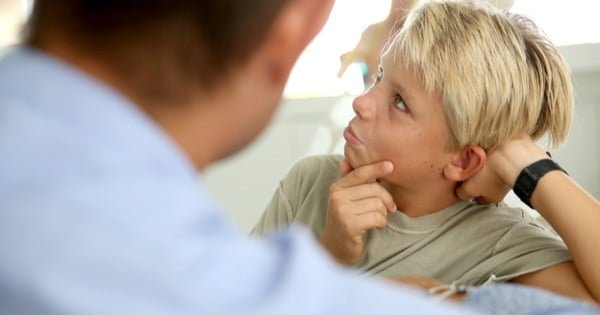
Alesia Nez enrolled at Washington State University just as the pandemic hit. Nez, a member of the Navajo Nation, didn’t spend her freshman year in Pullman, but instead studied remotely from Thoreau, New Mexico, a rural reservation town.
The biology major took WSU classes over the internet, but the service was spotty. “It was iffy to get on Zoom,” she said. “We had a poor connection.”
Nez, now 21, persevered, and was finally able to attend classes on the Pullman campus in her second year. But that hasn’t been the case for all Native students.
WSU suffered a sharp decline of Native students as a result of the coronavirus pandemic, and it is struggling to attract more such students.
“Our young people were impacted the most by the pandemic,” said Zoe Higheagle Strong, WSU’s vice provost for Native American programs, and a citizen of the Nez Perce Tribe. “The learning loss was tremendous.”
It’s a similar story throughout the state. The Washington Student Achievement Council reported in late September that American Indian/Alaska Native students suffered the highest rate of enrollment decline among all racial categories during the pandemic. (As a group, Indigenous students already had among the lowest rates of college enrollment.) Enrollment by AI/AN students fell by 38% at the state’s community and technical colleges between 2019 and 2022, the report said. At four-year public colleges, AI/AN student numbers dropped 27%.
In comparison, at four-year colleges, white student enrollment fell 15%, Hispanic enrollment fell 6% and Asian enrollment fell 5%. Enrollment of Black and Pacific Islander students increased in this period.
The pandemic hit higher education hard, including four-year universities and colleges, as well as community and technical colleges. The state Office of Financial Management has reported that the total of 279,000 students in Washington’s public higher education system in 2019 dropped to 231,000 by 2022.
But, the report states, the enrollment declines were less among students who received financial aid. “Ongoing enrollment decline poses a threat to educational attainment in the state,” the report says, particularly for students of color or from low-income households.
Erin Ross, director of Tribal Relations for Eastern Washington University in Cheney, rejected the idea that the pandemic was the strongest variable explaining the decline in American Indian enrollment numbers. “We live the effects of European American oppression and our ancestors’ history each day,” she wrote in an email. “A pandemic is just one event in a long line of historical traumas.”
Ross, a member of the Cowlitz Indian Tribe, said those traumas suppress enrollment numbers of Indigenous students at every higher education institution in the country.
A struggle in normal times
Many Native students struggle to get into the state’s colleges and universities in normal times. Nationally, American Indians have the lowest college enrollment of any ethnic group in the United States, according to the National Center for Education Statistics.
Washington offers some financial aid targeted at American Indians, but prospective students need help navigating financial aid requirements, Higheagle Strong said: “Scholarship opportunities are complex.”
Higheagle Strong is an associate professor in educational psychology and also an advisor to the board of the state Office of Superintendent of Public Instruction.
WSU, she adds, is improving efforts to attract American Indian students. Currently, students who identify as American Indian/Alaska Native make up only 0.4% of students at the state’s four-year colleges and only 0.8% of students at community colleges, according to the Washington Student Achievement Council.
Nationally, Native Americans make up about 1% of college undergraduates and less than 1% of graduate students, according to a 2019 report by the Postsecondary National Policy Institute. Only 17% of Native American high school graduates even enroll in college, compared to 60% of the total student population, the report said.
Challenges faced by Native American students include needing more financial aid; being less prepared for college because they attend high schools with little access to college prep courses; and having fewer family members who attended college, the report said.
Finances are a big barrier. “A $100 application bill can seem insurmountable,” Higheagle Strong said, along with the costs of visiting a prospective college.
Additionally, American Indian students often attend rural high schools where teachers do not have specialized certification in science or math courses, she said. Many incoming students “are not prepared in math and science and writing skills,” she said. “They often start out behind … I would love to see more bridge programs in the summer to prepare them before entering college,” she said.
According to Washington’s Office of Financial Management, of the 137,000 students enrolled at all six of the public four-year colleges and universities, the state counts about 600 undergrads and 200 graduate students as American Indian or Alaska Native, as of fall 2022. But Higheagle Strong says the state figures dramatically undercount the actual number of Indigenous students.
That’s because federal reporting requirements on race require people to select just one race, Higheagle Strong said.
A mixed-race person – for instance someone who is Hispanic and American Indian – must check the multi-race box, and thus is not counted as American Indian/Alaska Native, she said.
“That only captures about 25% of the Native population,” Higheagle Strong said.
She said numbers compiled by WSU show the university currently has more than 720 Native American/Alaska Native undergraduates and more than 120 graduate students.
“We are in a building stage,” Higheagle Strong said. “We’re having to work a lot harder” to attract students. WSU has Native student recruitment experts in Pullman and at each of its branch campuses, she said.
To attract students, WSU hires recruiters from Indigenous communities, Higheagle Strong said. They also bring tribal leaders and American Indian faculty to speak at recruiting camps, she said.
Many Native students who go to college do so “to take care of their families and communities,” Higheagle Strong said. “That’s not a common motivation for all students.”
Nez, the biology major, found out about WSU at a conference at her high school in Farmington, N.M., which focused on helping Native American students advance to college. Many of her classmates also enrolled in college, but many dropped out during the pandemic, she said.
But she was impressed by WSU’s Native American programs and support for students. She was not as impressed by the lack of minorities on campus.
“My entire life I was surrounded by Indigenous people,” Nez said. “Here it’s predominantly white.”
But Nez made friends and remembered her long-term plans. Now in her fourth year, she has become a leader among Native American students, and plans to graduate as a pharmacist. She hopes to return to New Mexico after graduation and help other Navajo members become comfortable with non-Indigenous medicines.
“My goal is to help our community in the future,” she said. “To help my community I had to leave my community.”
The lag in Washington
One tough problem for students is to find money for college, since they often come from poverty-stricken communities, Higheagle Strong said.
Many people assume Native nations can pay for their students to attend college from casino revenue. But most nations spend that money on social services and other programs, Higheagle Strong said.
There are plenty of smallish scholarships available to American Indian students, she said. But securing each scholarship requires a lot of work. The state of Washington has also established a Native American endowed scholarship program that offers up to $2,000 to 10 to 15 students a year.
“Our office helps them apply to those,” Higheagle Strong said.
Because WSU is a land-grant college, Higheagle Strong would love to see it provide more scholarships to American Indians – which could be seen as repayment for what the nationwide education system in the past did to Indian students at horrific boarding schools, she said.
The universities also gained from the taking of Indian lands in the past, she said. “The Pullman campus is on the land of the Nez Perce, an Idaho tribe,” she said. “It’s a shame to disregard that.”
Higheagle Strong said Oregon, California, Montana and other states have stepped up to help American Indian students succeed by offering partial and even full scholarships. Washington has lagged in this.
“I’m not sure why there is such a barrier in Washington,” she said. “Normally we are progressive. For some reason we have been at a standstill.”
Oregon last year passed a law that reduced or eliminated tuition costs for students who belong to any of the state’s nine federally recognized tribes. The Oregon tuition waiver program can cover tuition, housing and books at public colleges. Legislators allocated $19 million for the first year of the program, and grants were awarded to 416 students.
Higheagle Strong pointed to a similar bill in the Washington Legislature last year, sponsored by state Democratic Rep. Debra Lekanoff, D-Bow, who represents parts of Whatcom, Skagit and San Juan counties. It would have provided money up to the full costs of tuition for members of federally recognized tribes.
The bill died, but it did lead directly to the Native Coug Scholars Fund at WSU, which for the next two years will provide financial aid to students from federally recognized tribes.
But many American Indians belong to Indigenous nations that are not federally recognized, or have moved to cities and lost touch with any tribes or tribal resources, Higheagle Strong said. “We have an obligation to them as well.”
Update October 11, 2023: This story has been updated to add context about the difference in how the state and Washington State University administrators count how many American Indian and Alaska Native students are served.
Visit crosscut.com/donate to support nonprofit, freely distributed, local journalism.
—
This post was previously published on CROSSCUT.COM.
***
From The Good Men Project on Medium
 What Does Being in Love and Loving Someone Really Mean? What Does Being in Love and Loving Someone Really Mean? |
 My 9-Year-Old Accidentally Explained Why His Mom Divorced Me My 9-Year-Old Accidentally Explained Why His Mom Divorced Me |
 The One Thing Men Want More Than Sex The One Thing Men Want More Than Sex |
 The Internal Struggle Men Battle in Silence The Internal Struggle Men Battle in Silence |
Join The Good Men Project as a Premium Member today.
All Premium Members get to view The Good Men Project with NO ADS.
A $50 annual membership gives you an all access pass. You can be a part of every call, group, class and community.
A $25 annual membership gives you access to one class, one Social Interest group and our online communities.
A $12 annual membership gives you access to our Friday calls with the publisher, our online community.
Register New Account
Need more info? A complete list of benefits is here.
—
Photo credit: Zoe Higheagle Strong (Nez Pierce), Washington State University Vice Provost for Native American Relations and Programs and Tribal Liaison to the President, poses for a photo on Friday, Oct. 6, 2023, at the Elson S. Floyd Cultural Center on the WSU campus in Pullman. WSU and other four-year colleges in Washington saw a sharp decline in Native enrollment after the coronavirus pandemic, and are struggling to attract more such students. (Ted S. Warren for Crosscut)
The post WA Colleges Say Indigenous Students Need More Support Post-Pandemic appeared first on The Good Men Project.